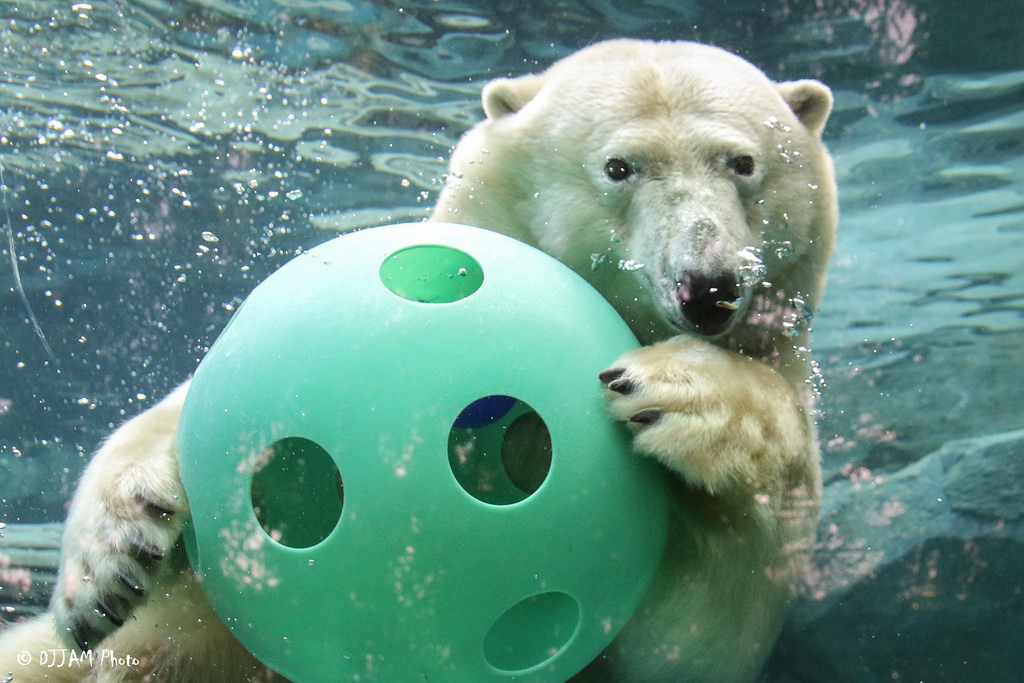Cincinnati Zoo Scientists Receive Prestigious Federal Grant

Supports Polar Bear Reproduction Research in Nation’s Zoos
CINCINNATI (September 18, 2018) – Scientists from The Lindner Center for Conservation and Research of Endangered Wildlife (CREW) at the Cincinnati Zoo & Botanical Garden have made significant strides towards unlocking the secrets of polar bear reproduction and will continue their work thanks to a $244,000 grant from the Institute of Museum and Library Services (IMLS). The award was funded by the agency’s largest competitive grant program, Museums for America.
 “There are only ~65 polar bears in U.S. zoos and, of those, only six females have produced cubs, despite the fact that nearly all pairs are observed breeding. The reasons behind the low birthrate are not well understood” said Dr. Erin Curry, CREW Reproductive Physiologist. “This grant will enable us to learn more about the reproductive physiology of this species and, consequently, to provide enhanced care for all polar bears in human care. Additionally, insight gained from studying zoo bears may be applicable to their wild cousins.”
“There are only ~65 polar bears in U.S. zoos and, of those, only six females have produced cubs, despite the fact that nearly all pairs are observed breeding. The reasons behind the low birthrate are not well understood” said Dr. Erin Curry, CREW Reproductive Physiologist. “This grant will enable us to learn more about the reproductive physiology of this species and, consequently, to provide enhanced care for all polar bears in human care. Additionally, insight gained from studying zoo bears may be applicable to their wild cousins.”
Scientists at CREW are poised to address the reproductive challenges faced by this iconic species. Polar bears were identified as one of CREW’s four Signature Projects and CREW scientists have monitored 63 polar bears at 30 North American institutions since 2007 to better understand female cyclicity, male reproductive seasonality, and the long-term effects of contraceptives. They have established methodologies for semen collection and cryopreservation and performed the world’s first polar bear artificial insemination (AI) in 2012. This IMLS award will allow them to: 1) continue to build the world’s first polar bear sperm bank; 2) determine the age and factors influencing sexual maturity; and, 3) employ new technologies to develop a pregnancy test for this species. “IMLS is proud to support their work through our grant making as they inform and inspire all in their communities.” said IMLS Director Dr. Kathryn K. Matthew.
 “One aim of this project is to ensure genes from valuable males will not be lost if the males fail to reproduce naturally,” said Dr. Curry. “Because some females of reproductive age are without males, semen collected as part of this endeavor will offer them a chance of cubs via AI. Polar bear semen cryopreserved and stored in CREW’s CryoBioBank® will be made available to other AZA institutions for this purpose.”
“One aim of this project is to ensure genes from valuable males will not be lost if the males fail to reproduce naturally,” said Dr. Curry. “Because some females of reproductive age are without males, semen collected as part of this endeavor will offer them a chance of cubs via AI. Polar bear semen cryopreserved and stored in CREW’s CryoBioBank® will be made available to other AZA institutions for this purpose.”
Another objective of the grant is to develop a pregnancy test for this species. Currently, it is impossible to determine whether a female is truly pregnant or exhibiting a pseudo-pregnancy until she produces cubs (or not) in November or December. To err on the side of caution, potentially-pregnant females are managed as if they are pregnant.
“The perfect example is our very own female, Anana. She bred with our male this past spring, has gained roughly 140 pounds in just a few months and her hormone levels, activity, and appetite are on par with a pregnant bear; however, we don’t know whether it’s a true pregnancy or a pseudo-pregnancy” said Curry. “We are proceeding as if she is pregnant, which requires Zoo-wide cooperation. Construction and traffic in front of and around the polar bear habitat has been halted, lights and music are turned off to avoid disturbances, denning protocols are in place, and soon a 24-hr watch will be initiated. “A reliable pregnancy test would resolve much of the uncertainty surrounding reproduction in this species.”
Most people will never see a polar bear in the wild, but approximately 181 million people visit zoos each year. Zoo polar bears act as Arctic ambassadors for their wild cousins, helping to communicate the messages of conservation and climate change to broad audiences.

